Click on the image to read the March update in full.
To access previous updates click on Archived Newsletters.
[/et_pb_text][/et_pb_column][/et_pb_row][/et_pb_section] [post_title] => March Newsletter [post_excerpt] => [post_status] => publish [comment_status] => closed [ping_status] => open [post_password] => [post_name] => march-newsletter [to_ping] => [pinged] => [post_modified] => 2024-03-11 18:26:16 [post_modified_gmt] => 2024-03-11 07:26:16 [post_content_filtered] => [post_parent] => 0 [guid] => https://www.rfmp.com.au/?p=17288 [menu_order] => 0 [post_type] => post [post_mime_type] => [comment_count] => 0 [filter] => raw ) [1] => WP_Post Object ( [ID] => 17094 [post_author] => 2 [post_date] => 2024-02-07 11:51:27 [post_date_gmt] => 2024-02-07 00:51:27 [post_content] => [et_pb_section fb_built="1" _builder_version="4.16" da_disable_devices="off|off|off" global_colors_info="{}" da_is_popup="off" da_exit_intent="off" da_has_close="on" da_alt_close="off" da_dark_close="off" da_not_modal="on" da_is_singular="off" da_with_loader="off" da_has_shadow="on"][et_pb_row _builder_version="4.16" background_size="initial" background_position="top_left" background_repeat="repeat" global_colors_info="{}"][et_pb_column type="4_4" _builder_version="4.16" custom_padding="|||" global_colors_info="{}" custom_padding__hover="|||"][et_pb_text _builder_version="4.16" background_size="initial" background_position="top_left" background_repeat="repeat" global_colors_info="{}"]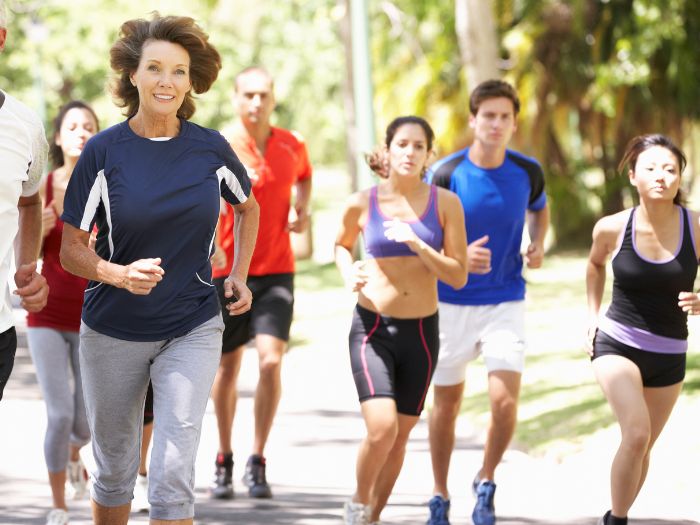 Planning New Year’s Resolutions is easy, it’s starting them and sticking to them that’s tough.
According to Time Magazine, 80% of New Year's resolutions fail by February.
Many more drop off over the following months, leaving just 8% of people sticking with their goals the entire year.
Less than one in ten.
Health and wellbeing goals are some of the most common and most important goals you can set yourself for the future.
Planning New Year’s Resolutions is easy, it’s starting them and sticking to them that’s tough.
According to Time Magazine, 80% of New Year's resolutions fail by February.
Many more drop off over the following months, leaving just 8% of people sticking with their goals the entire year.
Less than one in ten.
Health and wellbeing goals are some of the most common and most important goals you can set yourself for the future.
Click on the image to read the January update in full.
To access previous updates click on Archived Newsletters.
[/et_pb_text][/et_pb_column][/et_pb_row][/et_pb_section] [post_title] => January Newsletter [post_excerpt] => [post_status] => publish [comment_status] => closed [ping_status] => open [post_password] => [post_name] => newsletter [to_ping] => [pinged] => [post_modified] => 2024-03-11 18:28:17 [post_modified_gmt] => 2024-03-11 07:28:17 [post_content_filtered] => [post_parent] => 0 [guid] => https://www.rfmp.com.au/?p=16775 [menu_order] => 0 [post_type] => post [post_mime_type] => [comment_count] => 0 [filter] => raw ) [3] => WP_Post Object ( [ID] => 16654 [post_author] => 2 [post_date] => 2023-12-13 15:30:03 [post_date_gmt] => 2023-12-13 04:30:03 [post_content] => The Christmas Holidays are positioned as fun, happy and a time for family, friends and relaxing.
However, the holiday period can conjure up a few concerns for health and wellbeing.
Exposure to the harsh Aussie sun, overindulging and mental health triggers are some common ones. They can all be made much worse with excessive alcohol consumption, something that often creeps up at this time of year.
The Christmas Holidays are positioned as fun, happy and a time for family, friends and relaxing.
However, the holiday period can conjure up a few concerns for health and wellbeing.
Exposure to the harsh Aussie sun, overindulging and mental health triggers are some common ones. They can all be made much worse with excessive alcohol consumption, something that often creeps up at this time of year.
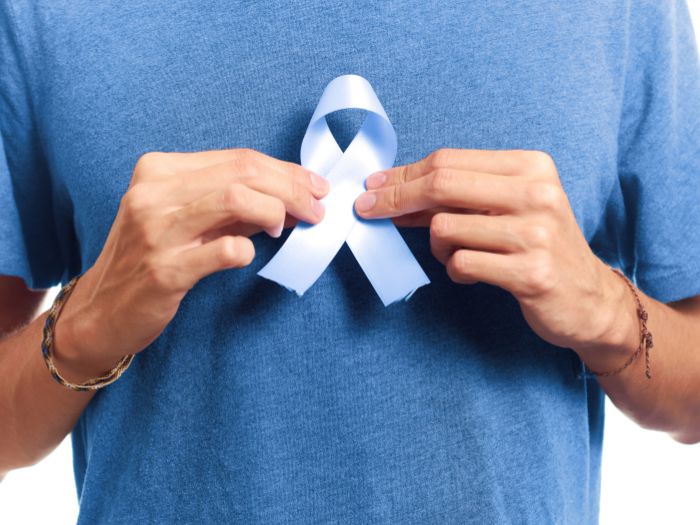 November is a big month for men’s health in Australia with a two important events marking the month:
November is a big month for men’s health in Australia with a two important events marking the month:
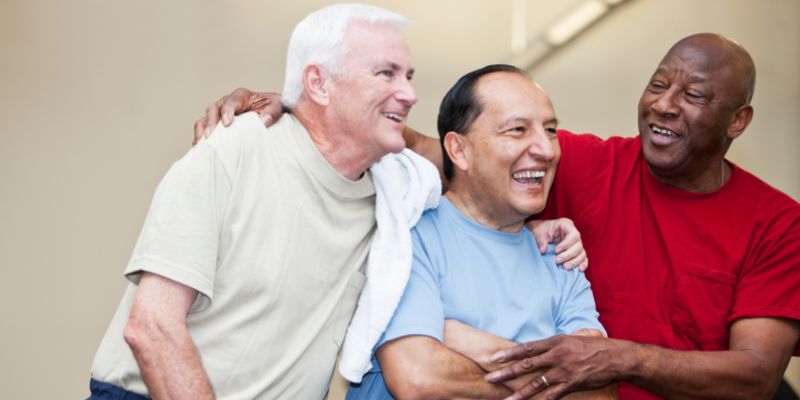
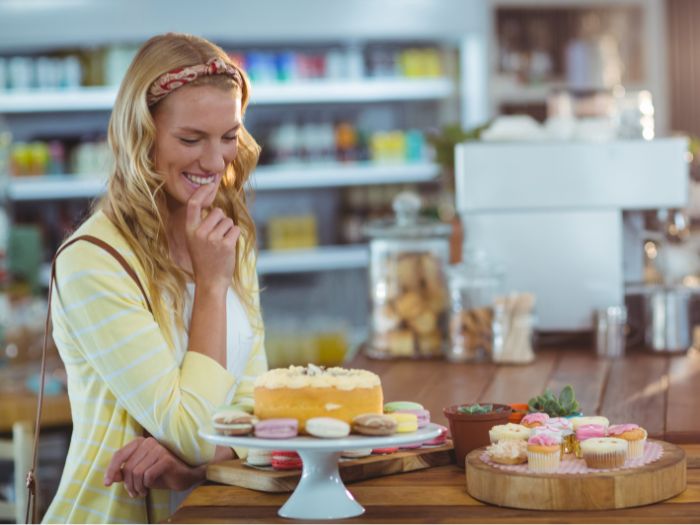 November shone a light on the impact of sugar on our diets. From sugar-laden soft drinks to more subtle ways sugar creeps into our diets, we take a look at how much sugar you may be consuming and the dangers it can pose.
November shone a light on the impact of sugar on our diets. From sugar-laden soft drinks to more subtle ways sugar creeps into our diets, we take a look at how much sugar you may be consuming and the dangers it can pose.

 Did you know that spring is an opportune time for important skin checks? There are a few reasons why, and a few more reasons why skin checks are so important for Australians.
In short, getting a skin check in spring allows doctors to inspect your skin before the sun has already done some damage, ensuring you know your skin’s health before summer, and typically, spring sees shorter waiting times.
But there’s more to it.
Did you know that spring is an opportune time for important skin checks? There are a few reasons why, and a few more reasons why skin checks are so important for Australians.
In short, getting a skin check in spring allows doctors to inspect your skin before the sun has already done some damage, ensuring you know your skin’s health before summer, and typically, spring sees shorter waiting times.
But there’s more to it.
 The mining industry, tradies, factory workers, hospitality workers, the transport industry, the health industry—there are many who benefit from pre-employment medicals.
To find out more about pre-employment medicals and how they work, we’ve called on our experts.
The team at Riverstone Family Medical Practice offers services ranging from management of acute & chronic conditions for men, women and children to preventative health and to workplace health.
Since 2007, we’ve had the privilege of providing countless pre-employment medicals in support of our community.
The mining industry, tradies, factory workers, hospitality workers, the transport industry, the health industry—there are many who benefit from pre-employment medicals.
To find out more about pre-employment medicals and how they work, we’ve called on our experts.
The team at Riverstone Family Medical Practice offers services ranging from management of acute & chronic conditions for men, women and children to preventative health and to workplace health.
Since 2007, we’ve had the privilege of providing countless pre-employment medicals in support of our community.
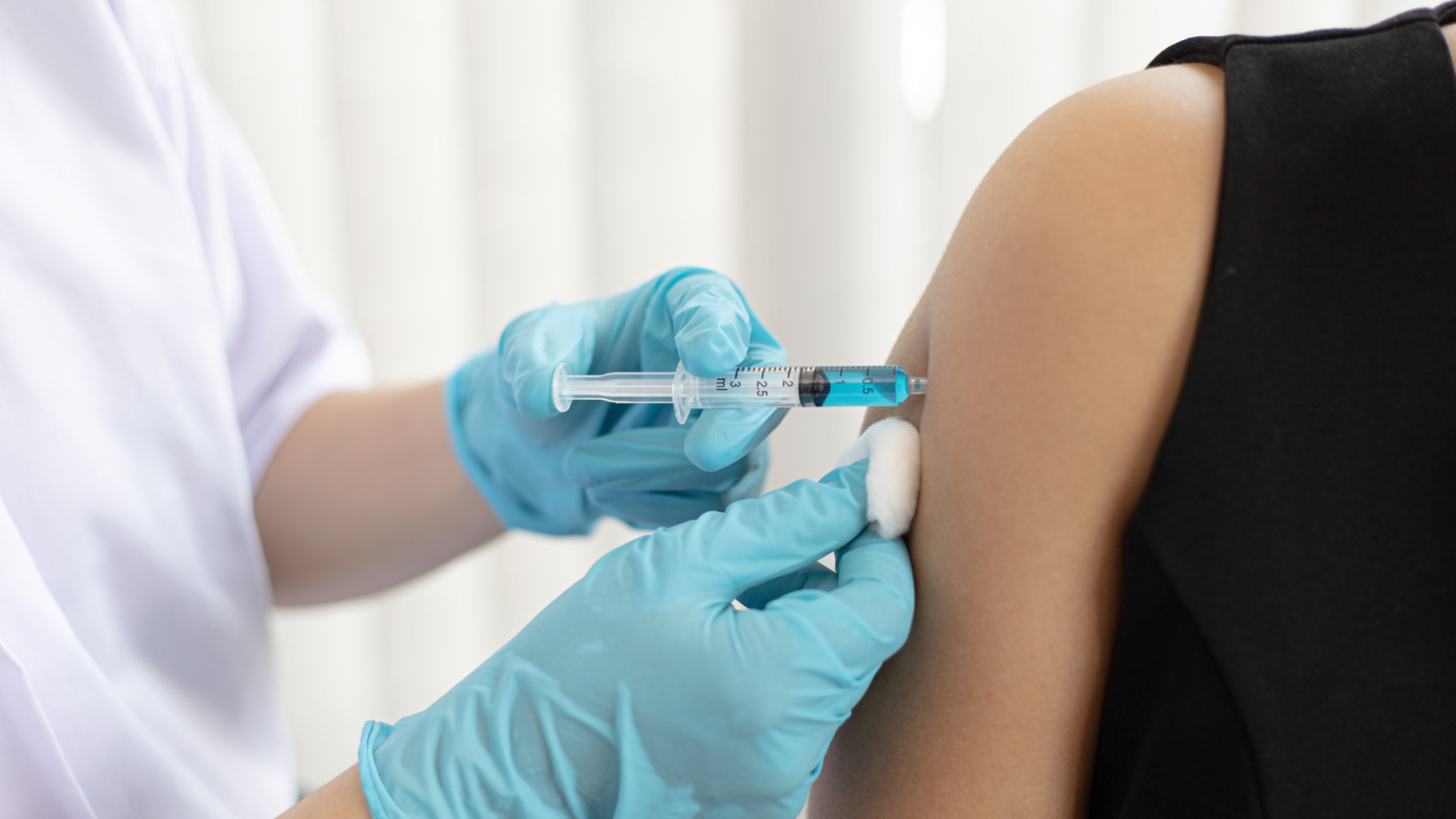 With autumn finally here it’s time to consider your flu vaccination. While we had a flurry of viral infections through February & March and some of these were influenza, we haven’t had the marked surge yet. For those who had RSV or para-influenza or even rhinovirus, you know that you can feel pretty unwell with these too, particularly if you’re very young or older.
But proper influenza is horrible and even young people can be very unwell with 55% of hospital admissions for influenza in 2022 being children <16 years old. Even healthy adults in their prime may feel like they’ve been hit by a truck for a week or more.
Last year cases of influenza peaked in June but normally they rise steadily over winter to peak in late August on average. The flu vaccine gives you about 40-60% protection from influenza and while it’s not perfect it will reduce your chance of hospitalisation or death. We recommend vaccination from late April into early May so your immunity lasts the distance to spring.
Please book in to one of our daily flu vaccination clinics.
[post_title] => Book Your Flu Vaccine Today
[post_excerpt] =>
[post_status] => publish
[comment_status] => closed
[ping_status] => open
[post_password] =>
[post_name] => book-your-flu-vaccine-today
[to_ping] =>
[pinged] =>
[post_modified] => 2023-05-23 17:42:06
[post_modified_gmt] => 2023-05-23 07:42:06
[post_content_filtered] =>
[post_parent] => 0
[guid] => https://rfmp.vivianyeung.com.au/?p=14652
[menu_order] => 0
[post_type] => post
[post_mime_type] =>
[comment_count] => 0
[filter] => raw
)
)
With autumn finally here it’s time to consider your flu vaccination. While we had a flurry of viral infections through February & March and some of these were influenza, we haven’t had the marked surge yet. For those who had RSV or para-influenza or even rhinovirus, you know that you can feel pretty unwell with these too, particularly if you’re very young or older.
But proper influenza is horrible and even young people can be very unwell with 55% of hospital admissions for influenza in 2022 being children <16 years old. Even healthy adults in their prime may feel like they’ve been hit by a truck for a week or more.
Last year cases of influenza peaked in June but normally they rise steadily over winter to peak in late August on average. The flu vaccine gives you about 40-60% protection from influenza and while it’s not perfect it will reduce your chance of hospitalisation or death. We recommend vaccination from late April into early May so your immunity lasts the distance to spring.
Please book in to one of our daily flu vaccination clinics.
[post_title] => Book Your Flu Vaccine Today
[post_excerpt] =>
[post_status] => publish
[comment_status] => closed
[ping_status] => open
[post_password] =>
[post_name] => book-your-flu-vaccine-today
[to_ping] =>
[pinged] =>
[post_modified] => 2023-05-23 17:42:06
[post_modified_gmt] => 2023-05-23 07:42:06
[post_content_filtered] =>
[post_parent] => 0
[guid] => https://rfmp.vivianyeung.com.au/?p=14652
[menu_order] => 0
[post_type] => post
[post_mime_type] =>
[comment_count] => 0
[filter] => raw
)
)
Click on the image to read the March update in full.
To access previous updates click on Archived Newsletters.

Planning New Year’s Resolutions is easy, it’s starting them and sticking to them that’s tough.
According to Time Magazine, 80% of New Year’s resolutions fail by February.
Many more drop off over the following months, leaving just 8% of people sticking with their goals the entire year.
Less than one in ten.
Health and wellbeing goals are some of the most common and most important goals you can set yourself for the future.
At Riverstone Family Medical Practice, we know that our community is family-oriented and loves the outdoors, things that go hand in hand with good health.
However, making healthy choices and sticking to them often takes help from professionals.
As such we’ve put together these six tips to help make 2024 your healthiest year yet.
Without something to aim for you’re more likely to just go around in circles and end up frustrated and disappointed. Think carefully about what you want to achieve.
Be SMART and choose a goal that is Specific, easy to Measure, likely to be Achievable, Relevant to you at this time, and has a Time-limit to hold yourself to it.
Here’s an example of a SMART health-related goal:
Goal: Improve cardiovascular health by running a 5k race in under 30 minutes within the next four months.
No matter what you do to bolster your health, wellbeing or fitness this year, recording your progress is a great idea.
It means keeping a record on your phone with dates and a description of what you did, downloading a fitness tracker or health app or even writing it down on paper.
You might record your time exercising or distance ran/walked, calories, junk food you replaced with healthier options, steps or similar.
Recording your progress means you can see your improvement but don’t be disappointed when it seems to stall for a while…that’s life! Keep going and your patient persistence will pay off over time. This does wonders for a sense of achievement and highlights anywhere you might be able to improve.
Also, with your progress visible, you’ll be much more likely to stick with your healthier choices.
Here, we don’t mean replacing all your treats, desserts and nice meals with vegetables, we mean once a week, once a fortnight or when you can, make healthy choices.
For example, you might replace a latte with sugar with black coffee once a week or replace chips with a healthy sandwich or even fruit.
If you drink soft drinks regularly, replace a few with water.
There are many ways to replace unhealthy choices (that we all make sometimes) with healthier ones, and even once or twice a week can make a big difference.
Just make sure to record your progress.
Did you know that a simple dinner with friends can easily clock in at over 1,000 calories per person?
Add in drinks, pre-dinner snacks, appetisers and dessert and it can easily rise to 1,500+. A glass of wine for example contains 80-100 calories, a couple of mouthfuls of dip, add another 40-80.
Here’s a few quick references:
Sources: bodyandsoul.com.au, calories.info, taste.com.au, nutritionix.com
Since socialising in person, not on social media, has many mental health benefits like emotional support, a sense of belonging and stress reduction, there’s no need to cut down on these events.
Instead, try adding exercise to socialising.
For example, you might go for a walk together before a meal, or even after with daylight savings. Joining a gym class with a friend or sports team is a great idea too.
There are many benefits of mixing social events and exercise.
The Australian Institute of Health and Welfare highlights the following for adults PER NIGHT:
• 7–9 hours for 18–64 year olds;
• 7–8 hours for people aged 65 and over.
Most of us would not even be getting the minimum seven hours.
Firstly, the benefits of natural sleep:
Here’s how to see those benefits.
1. Enforce bedtimes. This means going to bed at a time that allows you to get enough sleep. We say ‘enforce’ because it’s very easy to push loose bedtimes back.
2. Set yourself up for successful sleep. It can be hard falling asleep when you want, so in the lead up to bedtime avoid any stimulants like caffeine and alcohol and sugary food/drinks, which is a no-brainer. Also beware of high-energy media like controversial TV shows or action games, and any heated discussions with other people.
3. Create an optimal sleeping environment. Ensure your bedroom is clean, well-ventilated, dark and calm as this helps with sleep. Also, investing in a comfortable, high-quality mattress and bedding can really pay off in the long run.
4. Beware having pets in the room with you…commonest cause of disrupted sleep.
5. Don’t lay in bed awake. After 30 min get up and do something boring until you feel sleepy then go back to bed to try again.
Of course, make sure to record your hours of sleep to the best of your ability. And if you seem to get your 7 hours but still wake tired every day then book in to see your GP to try to work out why. You might be surprised by how little you’re getting, and then see improvements when you pay attention to good sleep hygiene practices.
Naturally, this one only applies in the warmer months and is particularly important now.
We all know the dangers of sun damage to our skin and the importance of proper sun protection, but how about heat itself?
As discussed in a recent ABC news article, Australia, like the rest of the world, is seeing increasing high temperatures.
In fact, 2023 was the world’s hottest year on record with 2024 predicted to take the title again.
Extreme heat in Australia generally means air temperatures from 37°C to 42°C or more.
As per the Australian Climate Service, a heatwave occurs when unusually high maximum and minimum temperatures persist for at least 3 days at a specific location.
When your core temperature gets to about 41°C your body essentially starts to cook from the inside.
What to do?
Keep an eye on the weather forecast so that you can plan your days and activities to minimise your time in the heat. Check out the Heat Watch website which will help you judge risk where you are and give more specific advice for the day.
You could also try to do your tasks in the early morning or late evenings to avoid being out in the direct sunlight which can make the air feel 10-15 degrees warmer than it actually is because of the sun’s rays touching your skin putting you more at risk. Shade and plenty of water, not alcohol or sugary drinks, are important on hot days.
If temperatures are getting into the extreme heat range, consider changing or postponing your plans.
It’s those UV rays that are dangerous, and if you’ve seen paint damage on an old car’s bonnet or roof or sun-faded buildings, imagine what it’s doing to your skin.
Skin checks are recommended every 6-12 months, regardless of your complexion, so if it’s been a while, get in touch with us.
Even small changes can go a long way in terms of health and wellbeing, and we’re not just talking about the physical improvements.
It’s well known that seeing solid progress can be a real boost to mood and sense of achievement. And it’s sustainable changes, even small ones, that help you move towards a healthier life and better wellbeing.
We again highlight the importance of record keeping, even simple notes in your phone.
Make 2024 the year that you see a healthier you.
Click on the image to read the January update in full.
To access previous updates click on Archived Newsletters.

The Christmas Holidays are positioned as fun, happy and a time for family, friends and relaxing.
However, the holiday period can conjure up a few concerns for health and wellbeing.
Exposure to the harsh Aussie sun, overindulging and mental health triggers are some common ones. They can all be made much worse with excessive alcohol consumption, something that often creeps up at this time of year.
The holidays can be very busy for many of us, despite being off work. Make sure to leave some time for the things you like.
We’re talking about healthy things here.
A walk with friends or even alone, time for your favourite hobbies or perhaps taking on a project you’ve been thinking about over the last year.
Fixing/repairing something, gardening, DIY around the house or taking up a sport are some examples.
The holidays are a great opportunity to kick off a NewYear’s Resolution you might have, so leave some time for yourself to make it happen.
It’s easy to overeat during the holidays, especially on Christmas Day surrounded by temptations.
Here are some tips to help you manage your calorie intake:
Well all know that the UV rays are dangerous and intensify over the summer months. Make sun protection part of your routine these holidays.
Remember to apply SPF50+ sunscreen, the highest protection rating available in Australia, and wear a hat, sunglasses and long sleeves.
Additionally, don’t forget that being in the shade doesn’t always mean you’re protected. UV rays can reflect off surfaces like sand and concrete and penetrate clouds.
🌞 If it’s been a while since your last skin check, now is a great time to ensure you skin isn’t hiding anything.
Book a skin check today and know how your skin health stacks up before time in the sun.
Excessive alcohol consumption and binge drinking come with an increased risk of health problems. That’s in addition to the increased risk of personal injury and damage to your bank account.
Don’t let your holidays be about alcohol.
This can be difficult if you find yourself pressured by friends and family members, something quite common around Christmas.
Instead, set a few expectations beforehand, perhaps informing them (and yourself) that you won’t be drinking too much, aka ‘only having a few’.
Also, try to aim for drinks with a lower alcohol content, these are often cheaper too.
Did you know that the Christmas holidays are a busy time of the year for health professionals in regards to mental health concerns?
There are a few reasons why:
Increased family tensions. Families often get together at Christmas which can sometimes strain relationships, especially if members may not get along well.
Isolation. Some people can feel extra lonely over the holiday period, especially if they don’t have friends and family around.
Financial pressure. The Christmas period can put a lot of strain on budgets and bank accounts as people travel, entertain family and friends and spend more than they would at other times of the year.
These pressures can all be exacerbated by excessive alcohol consumption, so consider your plans and prepare mentally to minimise any stress.
There are ways to reduce risks to your mental wellbeing:
Talk openly with family and friends about your needs and boundaries and let them know if you need some alone time or if certain activities/events are causing stress.
It’s okay to say “no” to commitments or events if you feel overwhelmed. Some people find that social events in small doses, meaning leaving early or only attending a few, works well.
If you know, or even have a feeling that a certain event might cause you stress over the holidays, think about how you can minimise it and prepare mentally.
For example, you might avoid a certain person, come up with sensible ways to deal with things or replace expensive activities with cheaper ones if financial pressure gets to you.
With the year ending and the next one beginning, it’s a great time to reflect on what went well and why, and what you could improve on.
You’ll no doubt have had a few wins over the last 12 months, so be proud of your accomplishments.
Set a New Year’s Resolution with realistic and achievable goals. It can be a big lift to have some solid plans in place.
The Christmas holidays are meant to be happy and joyful, and luckily, they usually are.
However, there are a number of risks that can increase over the silly season, so it’s best to do what you can to minimise them.
To recap some standouts:
Consider what you’ve got planned over the break. There might be a few ways to add in something healthier.
Coming back to work in January feeling refreshed is a gift you can give yourself.

November is a big month for men’s health in Australia with a two important events marking the month:
Since 1999, International Men’s Day has celebrated the positive value men bring to the world, their families and communities worldwide.
This year’s theme is “Zero Male Suicide. Together we can stop male suicide”.
Movember also shines a spotlight on mental health for men while raising awareness around prostate cancer, testicular cancer and men’s health in general.
Here’s an interesting fact about Movember: The movement has become a global event, with campaigns taking place in the US, UK and Europe to name a few, but did you know that Movember has humble Aussie beginnings?
It all started back in 2003 when two mates got together in Melbourne for a drink and their conversation turned to old fashion trends and men’s health. Read more here.
As such, we’ve put together these simple steps that men everywhere can take to shape up their physical health and mental health.
Your health and wallet will appreciate it. Often, healthier meals cooked at home are far cheaper and come with less sugar, trans fats and sodium.
For example, Taste.com puts many dishes at 200%-300% more expensive when ordered from a restaurant.
Cooking at home means selecting and using ingredients and cooking methods that are much better for you.
More benefits when cooking at home:
Movember and International Men’s Day share a few things in common, one being a focus on mental health.
That means not just you, but others around you too.
Signs that someone could be in distress might include:
You can find more information on how to spot the signs here.
If you find someone you know showing such signs, reach out to them. Movember recommended ALEC.
ALEC helps you navigate a conversation with someone who might be struggling: Ask, Listen, Encourage action and Check in — it’s that simple.
If you’re struggling or fear you might in the near future, help is available. Book an appointment with a mental health expert today.
More ways to maintain good mental health:
Regular check-ups and disease screenings are essential for preventing and detecting health issues early, before they may develop into something more serious.
Here’s why regular check-ups may be just what the doctor ordered in your case:
Early detection
Regular health check-ups can help detect problems in their early stages.
There’s a long list of diseases and conditions, including heart disease, cancer and diabetes, that often have much more favourable outcomes when diagnosed early.
In many cases, early detection leads to more effective treatment and a higher chance of a full recovery.
Regular health check-ups can often include screenings for testicular and prostate health too.
Your doctor will advise you on which screenings to take and when, things determined by your circumstances.
Preventive care
Preventive care is an important part of regular check-ups. Medical professionals can assess your risk factors and provide solutions on lifestyle changes to reduce the risk of developing various health issues.
In many cases, men may be drinking excessive amounts of alcohol or suffering from a poor diet and sedentary lifestyle without even knowing it.
Overall wellbeing
Regular check-ups provide a comprehensive view of your overall health which not only involves the physical aspect but also mental health.
Identifying and addressing health concerns can lead to a much improved quality of life.
If it’s been a while since your last check-up, get in touch with us.

Did you know that even a few small healthier choices can make a world of difference? It’s true.
Adding an extra 30 minutes of walking to your weekly routine, a few healthier meals and replacing an hour or two of screens with family and friends time can have major health benefits.
If you’d like more information about how to get involved with Movember or men’s health in general, these resources may help:

November shone a light on the impact of sugar on our diets. From sugar-laden soft drinks to more subtle ways sugar creeps into our diets, we take a look at how much sugar you may be consuming and the dangers it can pose.
13 – 19 November marked World Sugar Awareness Week which aims to raise awareness around the amount of sugar we actually consume.
A concerning statistic that World Sugar Awareness Week highlights here in Australia is that on average, Australians consume somewhere between 14-16 teaspoons of added sugars a day (a 600ml bottle of soft drink contains around 16 teaspoons of sugar).
14 November was World Diabetes Day. Diabetes is linked to diet, and an unhealthy, high sugar diet can often lead to the development of the condition.
Interesting – and alarming – facts from World Diabetes Day include:
A diet high in sugar can be dangerous to both your physical and mental health and contribute to a range of issues.
One of the most well-documented risks is the link between high sugar diets and the development of conditions such as obesity and type 2 diabetes.
Type 2 diabetes is where the body’s cells don’t respond effectively to insulin. This leads to elevated blood sugar levels known as hyperglycaemia, which can cause a range of severe health problems, especially if not managed properly.
A high sugar diet can also impact mental health.
Fluctuations in blood sugar levels, which are common when consuming sugary foods, can lead to mood swings, irritability, and fatigue.
This is sometimes referred to as a sugar crash in the hours after eating something sweet.
There is a growing body of evidence linking excessive sugar intake to risks of developing mental health disorders such as depression and anxiety.
30 Grams. Flavoured Coffee Drinks: Some of those canned or bottled coffee drinks can contain 30 grams of sugar or more. That’s nearly double the amount in a 600ml bottle of soft drink.
24 Grams. Fruit Juice: Certain juice can be surprisingly high in sugar, with some containing around 24 grams per cup.
15 Grams. Breakfast Cereals (per cup): Some may have 15 grams or more of sugar per cup, especially the sweetened ones.
Up to 12 Grams. Instant Soup: Some instant soup mixes may surprise you with added sugars, ranging from 4 to 12 grams of sugar per serving.
6 Grams. Barbecue Sauce (per tablespoon): Barbecue sauce can contain 6 grams of sugar or more per tablespoon.
Salad Dressings (2 tablespoons): Certain salad dressings can have around 6 grams of sugar per two-tablespoon serving.
Up to 30 Grams. Pastries (1 piece): Pastries, such as croissants or danishes, can have 15-30 grams of sugar or more.
20-30 Grams. Ice Cream (1 cup): No surprises that ice cream can contain large amounts of sugar, depending on the flavour and brand.
15-30 Grams. Muffins (1 medium): Muffins can have a wide range of sugar content, but many contain around 15-30 grams of sugar or more. Homemade muffins are typically on the lower side when it comes to sugar content.
20 Grams. Cake (1 slice): A slice of cake can have varying sugar content, but it’s not uncommon for it to contain 20 grams of sugar or more.
10-20 grams. Cookies (2-3 cookies): Depending on the type and brand, cookies can range from 10 to 20 grams of sugar for a small serving.
A few others that may be alarming:
Note that the above figures depend on brand and ingredients, so make sure you take a look at the labels of what you’re buying.
Most of us would answer, ‘not as much as I should be’. If this sounds like you, it may be time to take a look at what you’re eating on a regular basis.
Things like sauces and dressings can really hide a lot of sugar and if you add in a sweet snack with a coffee in the morning, your sugar intake might be much higher than you realise.
Check-ups can help identify risks.
Regular check-ups are an important part of everyone’s health routine and can allow medical professionals to catch subtle signs before they turn into something more serious.
Speaking to a doctor during a check-up also gives you the chance to discuss your diet and lifestyle and get professional advice.
If it’s been a while since your last check-up, or you’ve been questioning your diet, book an appointment with us today.
Like with many things in life, moderation is a valuable tool, but it can be hard to moderate sugar intake without knowing how much is in what you eat or how it’s affecting your body.
The next time you’re in the supermarket, take a look at the labels of what you’re buying, you might be in for a shock.
If you’re not sure how to do this, check out the advice here.
When eating out, it can be more difficult to know, but you can usually get an idea of the sugar content of what you’re ordering by giving it a quick Google search.
Sugar intake can really creep up, so make an effort to cut down your consumption.

• greater continuity of care with your registered practice, improving health
outcomes:
• longer Medicare Benefit Scheme (MBS) funded telehealth consultations with
your GP: Now our pensioners/concession card holders will be able to book a Bulk
Billed longer Telephone consult with their doctors. No need to travel to the
practice for your consults unless advised by your doctor.
• triple bulk billing incentive for longer MBS consultations for children under
16, pensioners, and concession card holders, from 1 November 2023 – Your
doctor is likely to be able to continue providing clinical care without charging a
gap fee.
• more regular visits from your GP and better care planning for people living in a
residential aged care home, from August 2024
• connections to more appropriate care in general practice for people who visit
hospital frequently, from mid-2024
There are multiple ways you can register with your chosen practice in MyMedicare:
• Start the registration process in your Medicare Online Account or Express Plus
Medicare Mobile app. Once done, practice staff will then accept the registration in
the MyMedicare system.
• If unable to register online for any reason, our patients will be able to complete a
form at the practice and staff will then register them online in My Medicare
system.
• For more information on how to register, go to this link: How to Register for MyMedicare
If you hold both a DVA Veteran Card and a Medicare card, you can register using
either. You can only have one registration, which will apply to any relevant Medicare
and/or DVA-funded service, regardless of which card you use to register.
If you choose to register in MyMedicare with a DVA Veteran Card, you will need to
complete a registration form at your chosen practice.
You can choose to withdraw from MyMedicare at any time.
If you register at a different practice, this will automatically withdraw any previous
registration and notify the practice.
If you want to withdraw your MyMedicare registration, you can either:
• withdraw from MyMedicare using their Medicare Online Account or Express Plus
Medicare Mobile app.
• contact your GP or practice and notify them that you want to withdraw your
registration from MyMedicare
• contact Services Australia directly and request to have your MyMedicare
registration withdrawn.

Did you know that spring is an opportune time for important skin checks? There are a few reasons why, and a few more reasons why skin checks are so important for Australians.
In short, getting a skin check in spring allows doctors to inspect your skin before the sun has already done some damage, ensuring you know your skin’s health before summer, and typically, spring sees shorter waiting times.
But there’s more to it.
Dr Kiran Shrestha has over 10 years’ experience as a doctor and has extra skills in Skin Cancer Medicine and Dermoscopy, along with an Advanced Certificate in Skin Cancer Surgery.
Dr Shrestha has acquired expertise in various procedures including biopsies, excisions, skin grafts and flaps, cryotherapy, and topical treatment for skin cancer.
Spring offers a number of benefits for people considering skin checks.
Skin checks rely on a doctor’s ability to view your skin clearly which gives the best chance of detecting something suspicious. Lighter clothing in warmer weather makes this easier.
“The most accurate and timely skin checks occur when a patient’s skin is not concealed”, explains Dr Shrestha. “Make sure you remove fake tans as much as possible.”
“After the winter months your skin is much less sun-affected than it might be during summer so we can get a clearer view of any spots and blemishes.”
“With the sunny weather not far off, a skin check in spring can help you understand the health level of your skin and your risk of skin cancer.
“In other words, patients can find out how to manage sun exposure to safer levels, how to use extra protection such as sunscreen and shading.
“Basically, a skin check in spring can help you prepare for the summer ahead.”
Find more skin cancer facts and stats by Sun Smart here.
There’s a general trend in Australia that sees skin checks gain popularity around mid to late summer, and while getting one at this time can be hugely beneficial, it leaves other times of the year quieter.
You can often find shorter wait times when booking skin checks in spring, especially early in the season.
After the winter months, a spring skin check allows you to assess any changes or damage that may have occurred during the colder season, such as dryness or sunspots, and address them promptly.
Winter can leave some people with dryer skin which a skin check can help assess and determine treatments if needed.
Additionally, if you have skin conditions like eczema or psoriasis, a skin check in spring can help assess how these conditions have fared during the winter and help in managing them effectively.
Top tips on protecting your skin over the sunny months
With summer fast approaching, and a hot, dry one likely now El Nino is declared for Australia, skin protection can be a life saver.
Take note of these top tips from Dr Shrestha.
ONE: Check the UV Index
Before heading outdoors, check the UV index for your location. The BOM forecast offers this information and tells you when sun protection is recommended. Remember that cloudy days are the sneakiest of all as UV damage is not blocked by most clouds.
TWO: Always apply sunscreen
If you spend time outdoors, ensure all exposed skin is covered with sunscreen that is reapplied following the directions on the pack, particularly if you’re swimming or sweating a lot.
You’ll also lose a lot of water during time in the sun, so keep hydrated. Doing so is a no-brainer and replaces moisture in your skin too.
THREE: Stay shaded if possible
Wearing a hat, covering skin with cotton clothing, or staying in the shade of buildings, trees or an umbrella is your best protection against sun damage.
FOUR: Be Aware of Reflective Surfaces
Be cautious around surfaces that can reflect sunlight, such as water, sand, and even building surfaces as they can intensify sun exposure and increase the risk of sunburn, even reaching up under your hat.
Reflection from sand is a big one, so applying sunscreen under your nose and below your eyebrows (obviously keeping it out of your eyes) is a nifty trick.
FIVE: Protect Your Lips
Apply lip balm with at least SPF 15 to protect your lips from sunburn and chapping. Lips can sometimes be forgotten when it comes to sun protection, but they can burn just as easily as other areas.
Lip balm also helps keep lips hydrated and healthy.
SIX: Stay Informed About Medications You May Be Taking
Certain medications can increase your skin’s sensitivity to the sun. Check with your doctor or pharmacist if you are taking any medications as some can cause problems in harsh sun.
SEVEN: Avoid Sunburn Remedy Myths
In the event of sunburn, avoid using home remedies like butter or oil, which can trap heat and worsen the burn. Cool the burn with cold running water as long as tolerated. Never use ice on a burn as it drives the heat deeper.
Instead, use over-the-counter sunburn relief products with aloe vera or cooling agents. Consult a professional for severe cases.
EIGHT: Apply Sunscreen
You can’t overdo sunscreen so please don’t go out without it
Remember, use a broad-spectrum sunscreen with at least SPF 30 every day, even on cloudy days. Reapply every two hours and after swimming or sweating when playing sports for example.
“While spring is an ideal time to get a skin check, it can’t be understated how important skin checks are regardless of the season—or your lifestyle, or complexion, gender, or anything else.” Says Dr Shrestha.
Skin checks are crucial in determining not only the health of your skin, but also your risk of anything serious.
Early detection massively improves the chances of successful treatment when it comes to skin cancer, one of Australia’s most prevalent diseases.
If it’s been a while since your last skin check, book an appointment today.

The mining industry, tradies, factory workers, hospitality workers, the transport industry, the health industry—there are many who benefit from pre-employment medicals.
To find out more about pre-employment medicals and how they work, we’ve called on our experts.
The team at Riverstone Family Medical Practice offers services ranging from management of acute & chronic conditions for men, women and children to preventative health and to workplace health.
Since 2007, we’ve had the privilege of providing countless pre-employment medicals in support of our community.
Pre-employment medicals, also known as pre-employment health assessments or examinations, are a standard practice in many industries and organisations to assess the physical and mental health of individuals before they are hired for a job.
They can also be helpful before a promotion, taking on new responsibilities or starting a new project.
These medical evaluations ensure that current and prospective employees are fit for the specific demands of the work they are to perform.
What’s involved
Pre-employment medicals typically involve questionnaires about health, a physical examination and a variety of screening tests and assessments that identify any existing health conditions, disabilities or potential issues that could affect an individual’s ability to perform their job safely and effectively.
These assessments aim to ensure a match between the candidate’s health status and the job requirements, not to unfairly discriminate against any candidate.
During a pre-employment medical, candidates may undergo a range of evaluations, including physical examinations, vision and hearing tests, drug and alcohol screenings, and assessments of cardiovascular and musculoskeletal health.
Depending on the nature of the job, additional assessments may be included, such as psychological evaluations or specific tests to determine a candidate’s ability to operate heavy machinery or handle physically demanding tasks.
The results of these medicals help employers make decisions about whether someone is medically suitable for the job, whether any support might be necessary, and whether their health might be at risk given the job’s demands.
There are a number of benefits that come with pre-employment medicals and help explain why so many Australian employers rely on them.
Risk Mitigation
Pre-employment medicals help identify potential health risks and medical conditions in candidates before they take on new and demanding work tasks.
This reduces the risk of on-the-job accidents, injuries or illnesses that could be aggravated by certain work environments.
Ensuring that candidates are physically and mentally capable of performing the essential duties of the job is vital for their safety, well-being and effectiveness.
Legal Compliance
In some industries, especially those with safety-sensitive positions, pre-employment medicals are legally mandated to ensure that employees can perform their jobs safely and without posing a risk to themselves or others.
This applies to some mining and manufacturing positions in Australia as one example.
Minimising Lost Hours
Assessing candidates’ health before hiring and commencing work can help reduce sick days due to health-related reasons.
This is particularly important in roles where frequent absences could disrupt operations.
Improved Workplace Safety
By identifying potential medical conditions or limitations, you can make necessary adjustments or modifications to the work environment, ensuring that employees can work safely and comfortably.
Health Promotion
Pre-employment medicals can also educate employees about their health status and promote healthy lifestyle choices.
This contributes to a culture of wellbeing within an organisation.
Further still, there have been many cases where pre-employment medicals actually find unknown health problems and steer people onto healthier lives.
Cost Savings
Identifying potential health issues early can prevent costly workers’ compensation claims, medical expenses and litigation that might arise from workplace accidents or incidents related to undisclosed health conditions.
Put simply, pre-employment medicals lead to:
Background: This organisation specialises in producing heavy machinery for construction and mining applications. Safety is a paramount concern due to the high-risk nature of the machinery operation and the physically demanding tasks involved in the assembly process.
The management team understood the importance of ensuring that new hires were physically capable of safely performing their assigned roles.
Challenge: With an increasing demand for its products and a growing workforce, Operations faced the challenge of maintaining a safe work environment while meeting production targets.
Leadership was concerned about potential workplace accidents, injuries and associated costs if employees were not adequately fit for the demands of their jobs.
Solution: Management implemented a comprehensive pre-employment medical assessment program for all new hires across various departments, including assembly, machining, and quality control.
The medical assessments were tailored to each job’s specific requirements, encompassing physical fitness, musculoskeletal health, vision, hearing, and more.
Results:
Lowered Absenteeism
The assessments helped prevent absenteeism, leading to fewer disruptions in production schedules.
Higher Productivity
With employees better suited for their roles, productivity increased as tasks were performed efficiently without the hindrance of undisclosed health issues.
Cost Savings
The above translated into substantial cost savings in terms of medical expenses and operational disruptions.
Employee Morale
Employees felt that their safety was valued by the company leading to improved morale and a positive work culture.
Conclusion: The implementation of pre-employment medical assessments showcased how prioritising employee health and safety can result in a range of benefits.
The company not only improved workplace safety but also experienced enhanced productivity, reduced costs and a stronger sense of employee engagement.
We offer a range of services for employers that can be tailored toward the particular industry and requirements.
Our team is experienced in carrying small, medium and large-scale pre-employment medicals in a fast but comprehensive way to suit all circumstances.
If you’d like to discuss how your work environment and those operating in it could benefit, get in touch with us today.

With autumn finally here it’s time to consider your flu vaccination. While we had a flurry of viral infections through February & March and some of these were influenza, we haven’t had the marked surge yet. For those who had RSV or para-influenza or even rhinovirus, you know that you can feel pretty unwell with these too, particularly if you’re very young or older.
But proper influenza is horrible and even young people can be very unwell with 55% of hospital admissions for influenza in 2022 being children <16 years old. Even healthy adults in their prime may feel like they’ve been hit by a truck for a week or more.
Last year cases of influenza peaked in June but normally they rise steadily over winter to peak in late August on average. The flu vaccine gives you about 40-60% protection from influenza and while it’s not perfect it will reduce your chance of hospitalisation or death. We recommend vaccination from late April into early May so your immunity lasts the distance to spring.
Please book in to one of our daily flu vaccination clinics.